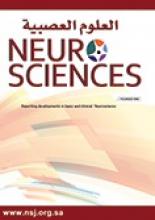To the Editor
We have read with interest the article by Alhiniah et al1 on a cross-sectional study by the treatment of pediatric epileptic drop attacks (EDAs), also known as atonic seizures, in Saudi Arabia. A structured questionnaire with 21 questions was sent electronically to 71 Saudi pediatric neurologists.1 In the first part of the questionnaire, demographic data were collected and in the second part of the survey physicians were asked to choose a treatment option for three model cases of EDAs.1 It was concluded that the majority of Saudi pediatric neurologists would use valproic acid (VPA) or levetirazetam (LEV) to treat pediatric EDAs.1 The study is excellent but has limitations that should be discussed.
The major limitation of the study is the use of an electronic questionnaire. Disadvantages of electronic questionnaires are that it is not possible to check whether the data provided are reliable, whether the addressees have actually answered, that missing data cannot be replaced, and that additional interesting data cannot be obtained.
A second limitation of the study is that the dependence of EDA treatment on the cause of the underlying epilepsy was not discussed. In particular, patients with mitochondrial epilepsy require special attention as several anti-seizure drugs (ASDs) can be mitochondrion-toxic and therefore exacerbate the underlying mitochondrial disorder (MID).2 We should know whether an MID was really ruled out, especially in sample patient-2.
A third limitation of the study is that the EEGs of two sample patients were not provided. Knowledge of the EEGs is critical as the choice of the ASDs is highly dependent on the EEG findings.
A fourth limitation is that it is unclear if other causes of falls were really excluded in the 3 sample patients. In patient-1 in particular, falls could also be due to quadrispasticity. Was patient-1 able to walk independently or did he require support? Were all three sample patients subjected to video-EEG monitoring to confirm that loss of muscle tone was associated with epileptiform discharges on EEG? In particular, in sample patient-2, it is unclear whether myoclonus was associated with epileptiform discharges on the EEG or whether there were alternative causes of myoclonus.
A fifth limitation is that epilepsy was only classified in the discussion, but not in the presentation of the 3 sample patients to the addressees. Already knowing when answering that patient-1 had Lennox Gastaux syndrome, patient-2 had Doose syndrome, and patient-3 isolated EDAs, could have influenced the choice of ASDs in the questionnaire. In addition, it would have been interesting to know if the selection of ASDs depends on the location of the post-gradual medical training.
Overall, the interesting study has limitations which challenge the results and their interpretation. Addressing these limitations could further strengthen and reinforce the statement of the study. Due to these limitations and open questions, it is difficult to select the optimal ASD therapy. Optimal ASD management of EDAs requires knowledge of the underlying etiology, EEG and video-EEG data, and knowledge of the tolerability of ASDs,
Reply from the Author
Thanks for your valuable comments. In regard to the electronic questionnaire, we think that electronic questionnaire is one of the best modalities to assess the clinical practice in certain region, in a certain subspecialty. It is quick and easy to apply. Multiple studies were performed worldwide in different clinical topics using this modality.
We agree that the etiology (like mitochondrial disease) is an important co-factor to be addressed. However, it is out of scope of our study to discuss the details of etiologies.
A third limitation is the EEG and we agree on that. However, we can clinically decide about the medications. For the forth comment, we would like to say that all patients had EDA confirmed by EEG and/or clinical scenario. We agree with the fifth limitation that the choice of ASMs is affected by the clinical scenario. Years of practice and post graduate training years were added in Figure 1.
- Copyright: © Neurosciences
Neurosciences is an Open Access journal and articles published are distributed under the terms of the Creative Commons Attribution-NonCommercial License (CC BY-NC). Readers may copy, distribute, and display the work for non-commercial purposes with the proper citation of the original work.






